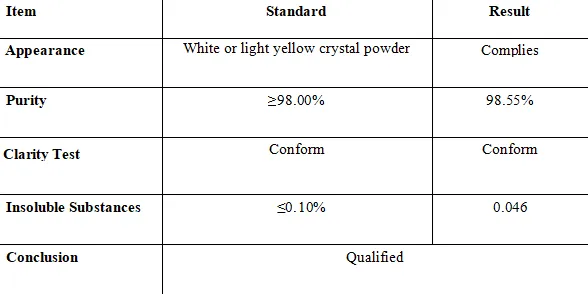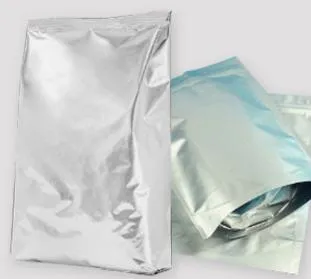Hebei Yize Trade Center Co., LTD.!
 Email: sale@hebeidisha.com
Email: sale@hebeidisha.com
 Tel: +86 13315186550
Tel: +86 13315186550
- Afrikaans
- Albanian
- Amharic
- Arabic
- Armenian
- Azerbaijani
- Basque
- Belarusian
- Bengali
- Bosnian
- Bulgarian
- Catalan
- Cebuano
- China
- China (Taiwan)
- Corsican
- Croatian
- Czech
- Danish
- Dutch
- English
- Esperanto
- Estonian
- Finnish
- French
- Frisian
- Galician
- Georgian
- German
- Greek
- Gujarati
- Haitian Creole
- hausa
- hawaiian
- Hebrew
- Hindi
- Miao
- Hungarian
- Icelandic
- igbo
- Indonesian
- irish
- Italian
- Japanese
- Javanese
- Kannada
- kazakh
- Khmer
- Rwandese
- Korean
- Kurdish
- Kyrgyz
- Lao
- Latin
- Latvian
- Lithuanian
- Luxembourgish
- Macedonian
- Malgashi
- Malay
- Malayalam
- Maltese
- Maori
- Marathi
- Mongolian
- Myanmar
- Nepali
- Norwegian
- Norwegian
- Occitan
- Pashto
- Persian
- Polish
- Portuguese
- Punjabi
- Romanian
- Russian
- Samoan
- Scottish Gaelic
- Serbian
- Sesotho
- Shona
- Sindhi
- Sinhala
- Slovak
- Slovenian
- Somali
- Spanish
- Sundanese
- Swahili
- Swedish
- Tagalog
- Tajik
- Tamil
- Tatar
- Telugu
- Thai
- Turkish
- Turkmen
- Ukrainian
- Urdu
- Uighur
- Uzbek
- Vietnamese
- Welsh
- Bantu
- Yiddish
- Yoruba
- Zulu
More Language
Jan . 14, 2025 12:05 Back to list
Chromic Acid CAS 7738-94-5
Understanding the Factors Influencing Chromium Trioxide Prices
Innovation plays a pivotal role in shaping the pricing landscape of chromium trioxide. As industries develop alternative methods and materials to reduce reliance on potentially hazardous chemicals, the demand for chromium trioxide may alter. For instance, advancements in eco-friendly surface treatment technologies can provide substitutes that may influence traditional chromium trioxide markets. Companies investing in such innovations not only lead the industry in sustainable practices but also contribute to price adjustments based on shifted demand. 4. Global Economic Conditions Macroeconomic conditions also exert considerable influence on the price of chromium trioxide. Economic downturns typically result in reduced industrial output, thereby decreasing demand for raw materials, including chromium trioxide. On the other hand, robust economic growth can lead to increased industrial activities and higher demand. Currency fluctuations and trade tariffs are additional factors that can affect international pricing, especially in countries that rely heavily on imports for their chromium trioxide supply. 5. Expert Insights and Industry Trends Industry experts often analyze market trends to forecast chromium trioxide price movements. Recent trends indicate a shift towards sustainability, with manufacturers exploring bio-based alternatives and more efficient recycling methods to recover used materials. Additionally, the advent of eco-labels and certifications for products containing safer chemical alternatives is forcing manufacturers to reevaluate their pricing strategies for chromium trioxide. In conclusion, the pricing of chromium trioxide is a complex interplay of market demand, regulatory policies, technological advancements, and global economic conditions. Industry experts and companies operating in sectors reliant on chromium trioxide must continuously monitor these factors to navigate the market effectively. By understanding and anticipating changes in these dynamics, they can make informed decisions, ensuring optimal procurement strategies and maintaining competitive pricing for their products and services.


Innovation plays a pivotal role in shaping the pricing landscape of chromium trioxide. As industries develop alternative methods and materials to reduce reliance on potentially hazardous chemicals, the demand for chromium trioxide may alter. For instance, advancements in eco-friendly surface treatment technologies can provide substitutes that may influence traditional chromium trioxide markets. Companies investing in such innovations not only lead the industry in sustainable practices but also contribute to price adjustments based on shifted demand. 4. Global Economic Conditions Macroeconomic conditions also exert considerable influence on the price of chromium trioxide. Economic downturns typically result in reduced industrial output, thereby decreasing demand for raw materials, including chromium trioxide. On the other hand, robust economic growth can lead to increased industrial activities and higher demand. Currency fluctuations and trade tariffs are additional factors that can affect international pricing, especially in countries that rely heavily on imports for their chromium trioxide supply. 5. Expert Insights and Industry Trends Industry experts often analyze market trends to forecast chromium trioxide price movements. Recent trends indicate a shift towards sustainability, with manufacturers exploring bio-based alternatives and more efficient recycling methods to recover used materials. Additionally, the advent of eco-labels and certifications for products containing safer chemical alternatives is forcing manufacturers to reevaluate their pricing strategies for chromium trioxide. In conclusion, the pricing of chromium trioxide is a complex interplay of market demand, regulatory policies, technological advancements, and global economic conditions. Industry experts and companies operating in sectors reliant on chromium trioxide must continuously monitor these factors to navigate the market effectively. By understanding and anticipating changes in these dynamics, they can make informed decisions, ensuring optimal procurement strategies and maintaining competitive pricing for their products and services.
Latest news
-
Certifications for Vegetarian and Xanthan Gum Vegetarian
NewsJun.17,2025
-
Sustainability Trends Reshaping the SLES N70 Market
NewsJun.17,2025
-
Propylene Glycol Use in Vaccines: Balancing Function and Perception
NewsJun.17,2025
-
Petroleum Jelly in Skincare: Balancing Benefits and Backlash
NewsJun.17,2025
-
Energy Price Volatility and Ripple Effect on Caprolactam Markets
NewsJun.17,2025
-
Spectroscopic Techniques for Adipic Acid Molecular Weight
NewsJun.17,2025